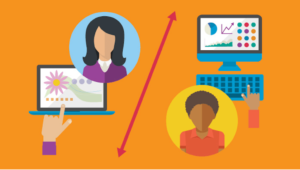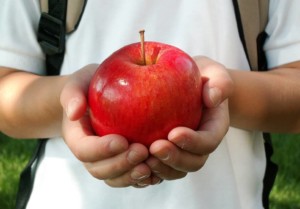Teacher Care: Apps and Ideas for Finding Balance

We are a few months into what has definitely been a challenging time and an exhausting period of transitioning in our schools and in our daily lives. With so much happening and extra burdens on our time, it is more important than ever to focus on ways to make time for self-care. I often say that this is something easier said than done. We have so many responsibilities, most likely more now than we’ve had in the past. Many of us are teaching in either a fully virtual or hybrid learning environment, which as many have said, feels like doing two jobs at the same time. What I have noticed in myself and also have heard many educators talking about is how much more difficult it is to make time at the end of the day to disconnect and to set some boundaries.
As educators, we are invested in being there to support our students and their families and because of the current situation, our availability stretches into the evening and the weekends, leaving no clear break in our day. What is the best thing to do? If we make ourselves available 24 hours a day every day of the week, it will lead to teacher burnout and we won’t be able to bring our best selves to our students. Beyond our professional space, it will negatively impact our personal lives as well. So we have to find something that works for us but also that enables us to continue to provide all that we can for our students.
Creating a new daily routine or finding an app to force ourselves to take a break, engage in mindfulness practices, focus on our own social-emotional learning and our health and wellness is important. I think it’s more important now than ever because we’re all trying to navigate through this constantly changing experience and it is leading to exhaustion, frustration, and potentially, burnout for many.
Not that I have all of the answers and finding balance and being able to disconnect are two areas that I have struggled with over the past couple of years although I’ve talked about them a lot. But I have been better about focusing on them especially now as I’m finding I am spending 16 hours on some days and many hours on the weekends just trying to catch up and create. And doing this at least very little time for myself and more importantly for family and friends as well.
Here are some ideas to try, some that I have been looking into and trying myself and would recommend that you consider trying for yourself too.
Mindfulness apps
I recently started using the JabuMind app, and I wasn’t always one to focus on mindfulness practices but having read a few books about mindfulness and joining in the #teachmindful chat over the last couple of years, I decided to give it a try. With the start of the school year and feeling overwhelmed at times, I wanted to focus on self-care and wanted to try something different. Here are some of the apps I have explored.
1. Calm App. A new ten-minute program is added to the app each day to help with starting the day or winding down. Included in the app are more than 100 bedtime stories to help you disconnect in the evening. The app also includes breathing exercises. With the Calm App, you can explore the categories for music, sleep, and body to find meditations and relaxing exercises.
2. Happify. Using science-based activities and games, you can work toward reducing stress, overcoming negative thoughts, and improving your emotional well-being with Happify. The activities can be completed on any device and help the user work through stress and practice mindfulness. There are articles available in their “Get Inspired” section where you can find techniques for dealing with stress, tips for better mental health, working through anxiety, and more.
3. Headspace. Provides guided meditations, animations, and articles on important topics related to wellness. There are many helpful topics available in their blogs including health, sports, and work. Headspace is available for free to educators K through 12. Headspace offers a lot of options for focusing on mediations, improving sleep, dealing with stress, and practicing mindfulness.
4. JabuMind. Offers a 10-week wellness series for educators that features iRest tools. Each day you can use the mood and sleep check-in and then use the statistics to track your quality of sleep, mood, and see the meditations that you have completed. Each week includes meditations for starting your day, break time, releasing your day, bedtime, and the weekend. The library provides guided visualizations on a variety of topics. There are also blogs that provide tips for dealing with stress, helping with anxiety, and even communicating with families.
5. Pure Edge. Find strategies and curriculum resources for educators and learners to overcome stress and focus on social, emotional, and academic wellness and mindfulness. The strategies provided are based on “Five Principles of Health & Wellness: body, breath, mind, attention, and engagement.” Free curriculum is available for use in grades pre-K through 12.
6. Smiling Mind. A program focused on helping anyone to practice mindfulness or meditation and deal with personal and professional challenges and pressures. Programs are available for adults and also for children ages 3-18. There are resources for classrooms and the workplace as well. Smiling Mind is available through an app-based program and on the web.
7. What’s up. An app that provides multiple resources for helping to work through stress and overcome negative thinking patterns. There are forums available that provide a space to build a supportive network. Within the app, there are options including a grounding game that has 100 questions for working through stress, a diary to use for tracking thoughts and feelings, a habit tracker, and more.
Beyond the apps
Exercise. Even if that means doing laps around your house if the space allows for it, speaking from experience, just make sure that you get up and move if you’re teaching from home get up and move around your classroom if you’re teaching from school and students are not there. Get outside whenever you can, even a 10-minute walk is quite helpful. Try to not do anything but listen to the sounds of nature or maybe some music or a podcast. Whatever it is that creates time for you to take a break.
Reading. A good friend of mine, Melody McAllister, often talks about the books that she is reading and how she chooses ones not focused on education or anything related to work. She chooses books that look interesting or for entertainment just to have a diversion to break her brain away from focusing on all of the constancy of work that we are all experiencing. Finding time to actually sit and read a book may also present a challenge so maybe listen to a book instead while taking a walk and doubling up on your self-care.
Taking care of ourselves is important so that we can best care for others. We can also share these ideas with our students depending on their age and model the practice of taking breaks or making time for meditation or mindfulness. Anything that we can do to get away from the screen, to break away from the work, and to disconnect, will help us to clear our minds and recharge.
For more, see:
- Why We Need to Make Self-Care a Priority: Four Ideas to Start
- Why Every K-12 District Should Invest in Social and Emotional Learning
- Trauma-Supported Education and Educator SEL Training is Vital for The Classroom
Stay in-the-know with innovations in learning by signing up for the weekly Smart Update.






0 Comments
Leave a Comment
Your email address will not be published. All fields are required.